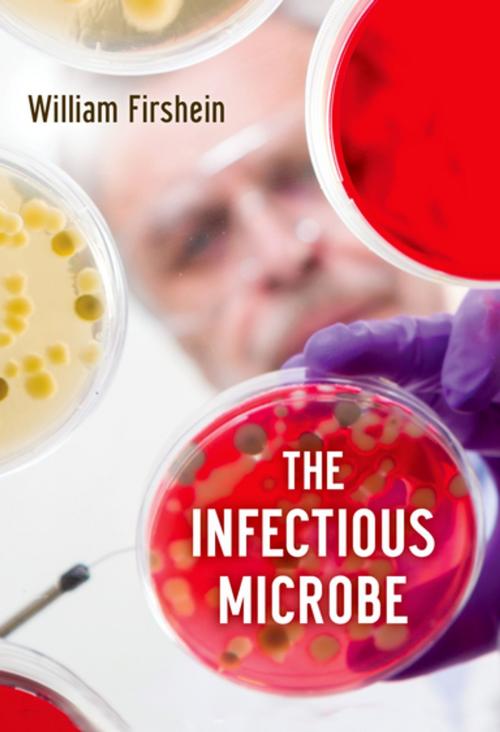The Infectious Microbe
Nonfiction, Health & Well Being, Medical, Medical Science, Microbiology, Ailments & Diseases, Infectious Diseases, General| Author: | William Firshein | ISBN: | 9780199329632 |
| Publisher: | Oxford University Press | Publication: | January 2, 2014 |
| Imprint: | Oxford University Press | Language: | English |
| Author: | William Firshein |
| ISBN: | 9780199329632 |
| Publisher: | Oxford University Press |
| Publication: | January 2, 2014 |
| Imprint: | Oxford University Press |
| Language: | English |
Of the innumerable ways that science and humanity interact, few are as central or as significant as our interaction with microorganisms. Though these single-celled and "complete" living organisms have major impacts on many chemical and ecological processes, they are most often recognized for their ability to cause serious and sometimes fatal diseases. From diseases caused by bacteria, like pneumonia, tuberculosis, anthrax, meningitis, typhoid, and bubonic plague, to diseases caused by viruses, like HIV, polio, yellow fever, hepatitis, and influenza, humanity has struggled to cope with the rapidly changing capabilities of microorganisms. They are intimately involved with life, and must be taken into account in many ways when considering the welfare and health of all people. This book is a response to the current confusion and misunderstanding of microbes amongst the general public; written in narrative form, it will allow readers of all backgrounds to understand better the scientific concepts and terminology of how microbial or viral diseases are caused, to ask intelligent questions about the impact of diseases on our wellbeing, and to comprehend the reports about disease outbreaks that flood the media. The book begins by introducing the microbe, its history, and its basic science. Then, in an engaging narrative, Firshein describes seven critical microbial and viral diseases that plague our world, showing how each one illustrates the basic characteristics of infection. Each of these seven diseases follows the same path: invasion, internal spread, toxin effects, excretion, and transmission to a new host. In this lively discussion of pathogenicity, William Firshein reveals the fascinating scientific relationship between human and microbe, and shows us how humanity can live with microorganisms.
Of the innumerable ways that science and humanity interact, few are as central or as significant as our interaction with microorganisms. Though these single-celled and "complete" living organisms have major impacts on many chemical and ecological processes, they are most often recognized for their ability to cause serious and sometimes fatal diseases. From diseases caused by bacteria, like pneumonia, tuberculosis, anthrax, meningitis, typhoid, and bubonic plague, to diseases caused by viruses, like HIV, polio, yellow fever, hepatitis, and influenza, humanity has struggled to cope with the rapidly changing capabilities of microorganisms. They are intimately involved with life, and must be taken into account in many ways when considering the welfare and health of all people. This book is a response to the current confusion and misunderstanding of microbes amongst the general public; written in narrative form, it will allow readers of all backgrounds to understand better the scientific concepts and terminology of how microbial or viral diseases are caused, to ask intelligent questions about the impact of diseases on our wellbeing, and to comprehend the reports about disease outbreaks that flood the media. The book begins by introducing the microbe, its history, and its basic science. Then, in an engaging narrative, Firshein describes seven critical microbial and viral diseases that plague our world, showing how each one illustrates the basic characteristics of infection. Each of these seven diseases follows the same path: invasion, internal spread, toxin effects, excretion, and transmission to a new host. In this lively discussion of pathogenicity, William Firshein reveals the fascinating scientific relationship between human and microbe, and shows us how humanity can live with microorganisms.















